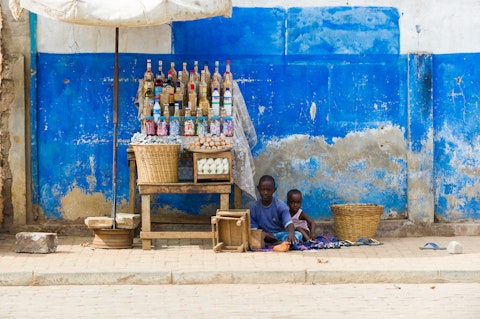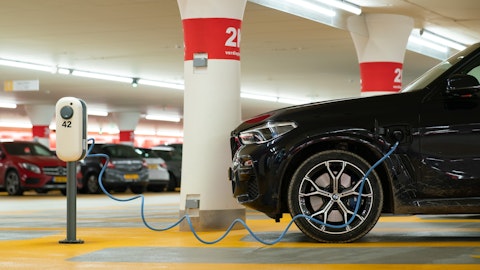In this article, we will talk about the 25 countries with the worst economies in the world in 2023. We will also look at the current trends contributing to slow economic growth in those countries and discuss the companies aiming to alleviate poverty. If you want to skip our detailed analysis, you can head straight to 10 Countries with the Worst Economies in the World in 2023.
Interrupted by the COVID-19 pandemic and rising inflation, a number of countries had to bear the cost of pandemic in the face of setbacks in education, health, and income losses. According to the World Bank, there was an increase of about 70 million people living in extreme poverty, resulting in the global poverty rate reaching 9.3% in 2020. The official poverty rate of the US reached 11.4%, a 1.0% increase from 10.5% in 2019, the first yearly poverty increase following five consecutive decreases.
The ongoing conflict of the Ukraine war and climate shocks have further hindered economic growth worldwide, with food and fuel prices skyrocketing. Considering the recent setbacks, nearly 7% of the world’s population will still be living on less than $2.15 per day by 2030, as per the World Bank. Currently, Afghanistan has the lowest GDP growth rate in the world, whereas Ireland is the richest country in the world in terms of GDP per capita as of 2023.
In addition to impeding US economic development, the Ukraine war has also significantly impacted Europe’s economic growth. The economic growth of 2023 was first predicted to increase by 1.2% but was later revised to 0.5% by the IMF. The predicted Global growth by the IMF is expected to decline to 2.7 percent in 2023 from 3.2 percent in 2022 and 6.0 percent in 2021. Except for the global financial crisis and the catastrophic period of the COVID-19 epidemic, this is the slowest growth profile since 2001.
In 2021, with the pandemic hampering factory operations and economic growth globally, multiple companies observed shutdown of their retail stores or bankruptcy.
For example, during the pandemic, the world’s biggest athletic shoe maker, Nike Inc. (NYSE:NKE), reported lower-than-expected quarterly sales due to shipment challenges and a decline in physical store sales. Furthermore, due to supply chain disruptions, including US port congestion and global container shortages, Nike Inc. (NYSE:NKE) experienced about a 10% drop in their revenue in North America in the three months to February 28, 2021. Despite witnessing challenges in the Middle East, Africa, and Europe, Nike Inc. (NYSE:NKE) addressed COVID-19 by maintaining healthy customer engagement and boosting online sales. Moreover, Nike Inc. (NYSE:NKE) committed to $25 million, with more than $2 million in donations for employees, to provide global support for COVID-19 response initiatives. Speaking of the shoe business, you should check out our article on Most Cushioned Walking Shoes for Work.
On the other hand, as a result of challenges like fluctuating demand and uncertain economy within the automotive market in South Africa, General Motors Corp. (NYSE:GM) ceased its local manufacturing and selling of Chevrolet Vehicles in the region back in 2017. General Motors Corp. (NYSE:GM) decided to exit the manufacturing market in South Africa mainly due to low exports and poor production. The premises permitted General Motors Corp. (NYSE:GM) to manufacture nearly 100,000 vehicles annually. However, only 34,000 vehicles were manufactured, with 2000-35000 vehicles exported in 2016. Moreover, the company’s attention inclined more towards financially rewarding countries like North America and China, as they wanted to primarily focus on producing autonomous cars. Hence, General Motors Corp. (NYSE:GM) decided to sell its operations to Isuzu Motors Ltd in South Africa.

Anton_Ivanov/Shutterstock.com
Our Methodology
To list the countries with the worst economies in the world in 2023, we have employed GDP growth rate to rank the countries. To ensure that the following list of countries is accurately and fairly ranked, we have sourced the data of the GDP growth rate for the year 2022 for each of the following countries from the World Bank. For the countries with the same GDP growth rate, countries with the higher poverty rate were ranked higher. The list is presented in an ascending order which means countries with lower GDP growth rates have been ranked higher.
Note: Since Afghanistan’s GDP growth rate for the years 2022 and 2023 was not available, we have ranked it according to its GDP growth rate in 2021.
25. Guatemala
GDP growth rate: 4.1%
As Central America’s largest economy, Guatemala had a GDP per capita of around $5,025 as of 2022. However, nearly one-half of the children under the age of 5 face severe malnutrition, making it one of the highest malnutrition rates in the world. Additionally, more than half of the population survives under the national poverty line with a poverty rate of 54%. It is one of the countries with the worst economies in the world in 2023.
24. Mozambique
GDP growth rate: 4.1%
Despite making significant progress in improving Mozambique’s poverty rate i.e. 64.6%, the country continues to suffer extreme poverty, with nearly 80% of its total population reliant on surviving on less than $2 per day. However, the growth rate is expected to reach 6% during 2023-2025 due to progress in sectors like services, LNG production, and increased commodity prices.
23. Honduras
GDP growth rate: 4.0%
Honduras is a lower-middle-income country, with around 60% of the population living in poverty. Despite being one of the countries with the worst economies in the world in 2023, the economy has the full potential to accelerate its growth owing to its strategic location which has access to ample productive natural resources.
22. Eswatini
GDP growth rate: 3.9%
Factors like high unemployment, continuous population growth, and unfair allocation of resources contribute to Eswatini’s deteriorating economy. As per the 2021 Labor Force Survey, the unemployment rate in the country stood over 33% in 2021, the highest in over a decade.
21. Madagascar
GDP growth rate: 3.8%
According to the World Bank, Madagascar had a GDP worth $14.95 billion in 2022. The country had a contraction of about 4.3% in its GDP in 2020 as a result of the pandemic, resulting in job losses and an increase in the poverty rate.
20. Mali
GDP growth rate: 3.7%
Mali is a landlocked country with one-half of the population facing poverty. Mali’s economy is mostly focused on agriculture, with a predominantly rural population engaged in subsistence agriculture. It is one of the countries with the worst economies in the world in 2023.
19. Guinea-Bissau
GDP growth rate: 3.5%
Guinea-Bissau is one of the coup-prone and politically unstable countries with a weak economy in the world. Despite having a very high natural wealth per capita, the country continues to suffer hindrances in its economic growth due to political turmoil and a lack of private sectors. Moreover, the country had a poverty rate of 21.8% in 2022.
18. Sierra Leone
GDP growth rate: 3.5%
Sierra Leone is one of the poorest economies, with a poverty rate of 26.1% and a GDP of $3.97 billion in 2022. According to the World Bank, investment in education provision and quality can help Sierra Leone grow its economy better by accessing more formal opportunities. It is also one of the least developed countries in the world in 2023.
17. Zimbabwe
GDP growth rate: 3.4%
Zimbabwe’s economy is mainly a result of contributions in sectors like agriculture and mining. Issues like high inflation and elevated interest rates have been observed in the country lately. During the COVID-19 pandemic, 7.9 million Zimbabweans were affected by poverty due to economic losses.
16. Nigeria
GDP growth rate: 3.3%
The deteriorating economy of Nigeria has resulted in millions of people being impacted by poverty. According to the World Data Lab’s Poverty Clock, 71,280,925 individuals – roughly 32% of Nigeria’s population – suffer from extreme poverty.
15. Ghana
GDP growth rate: 3.2%
The GDP growth was slowed from 5.4% in 2021 to 3.2% in 2022, resulting in slower growth for the agricultural and services sectors. Furthermore, the growth is estimated to reach 1.6% in 2023 and remain muted in 2024, according to the World Bank.
14. Angola
GDP growth rate: 3.0%
Angola’s economic fortunes have been linked to global oil demand, resulting in unstable growth and high levels of poverty and inequality. An investment in the private sector is advised to strengthen economic growth and reduce poverty in Angola. Moreover, the high poverty rate has resulted in a high unemployment rate in the country.
13. Comoros
GDP growth rate: 2.4%
Comoros is among the world’s poorest and least developed economies. With a GDP of $1.24 billion as of 2022, the increase in global food and fuel prices has significantly impacted Comoros’s economy, with inflation reaching about 12.5% in 2022. It is one of the countries with the worst economies in the world in 2023.
12. Chad
GDP growth rate: 2.2%
Chad, formerly an agricultural economy, joined the ranks of oil-producing countries in 2003, and its economy has been heavily contingent on oil since then. The country’s economy continues to suffer because of political instability, security conflicts, and a lack of infrastructure.
11. South Africa
GDP growth rate: 2.0%
Although South Africa’s economy is the largest industrialized and technology-driven economy based upon private enterprises in Africa, economic growth has been hindered due to electricity and power shortages. Moreover, inflation and a decline in investment rates have also had a negative impact on the country’s economy. South Africa is one of the countries with the highest rates of poverty.
Click here to see the 10 Countries with the Worst Economies in the World in 2023.
Suggested Articles:
- 40 Countries With Highest Rates Of Poverty
- 30 Least Developed Countries in the World in 2023
- 20 Worst Performing Economies in 2023
Disclosure: None. 25 Countries with the Worst Economies in the World in 2023 was originally published on Insider Monkey.





